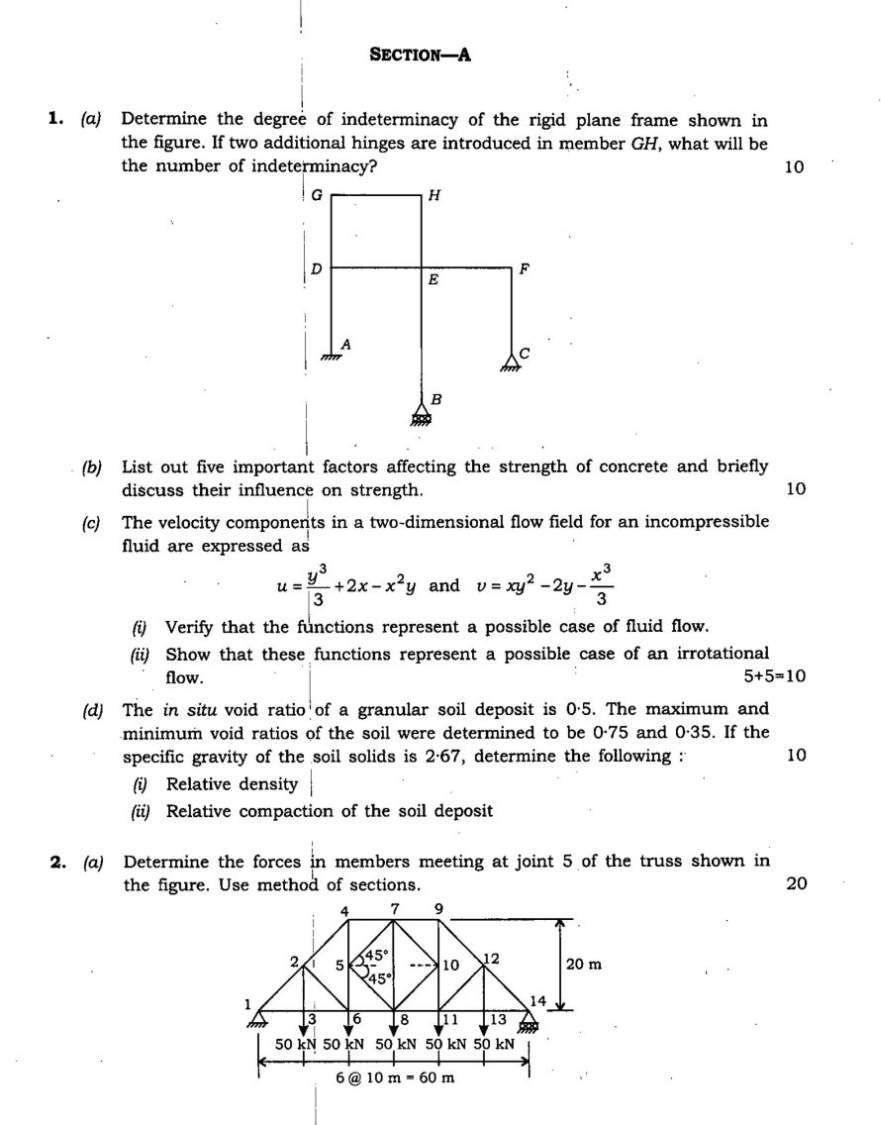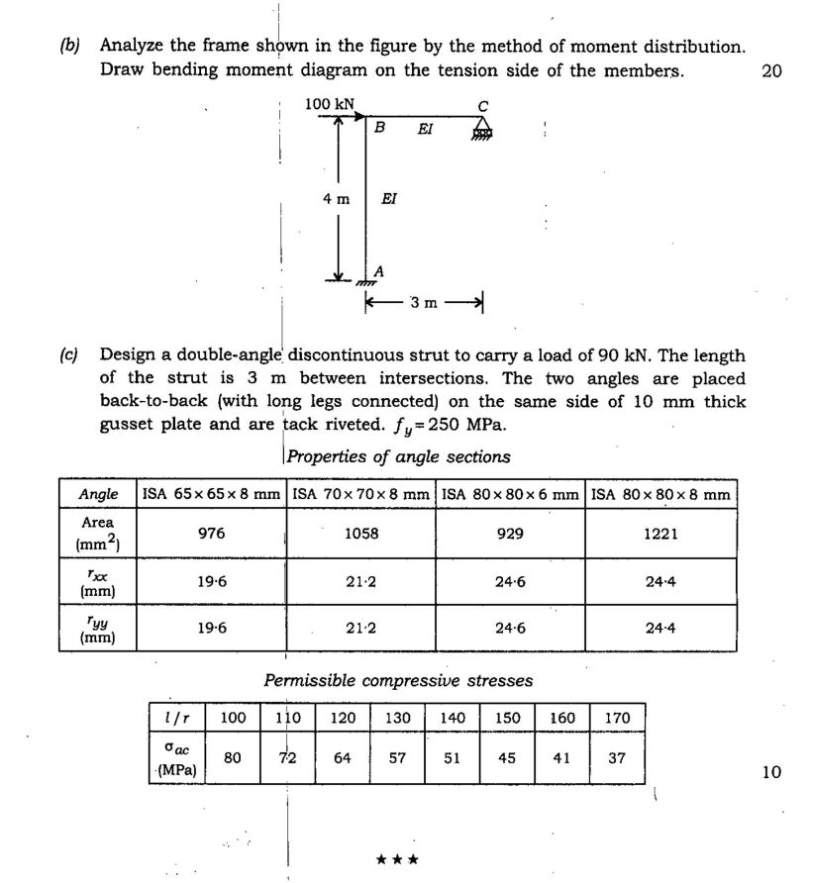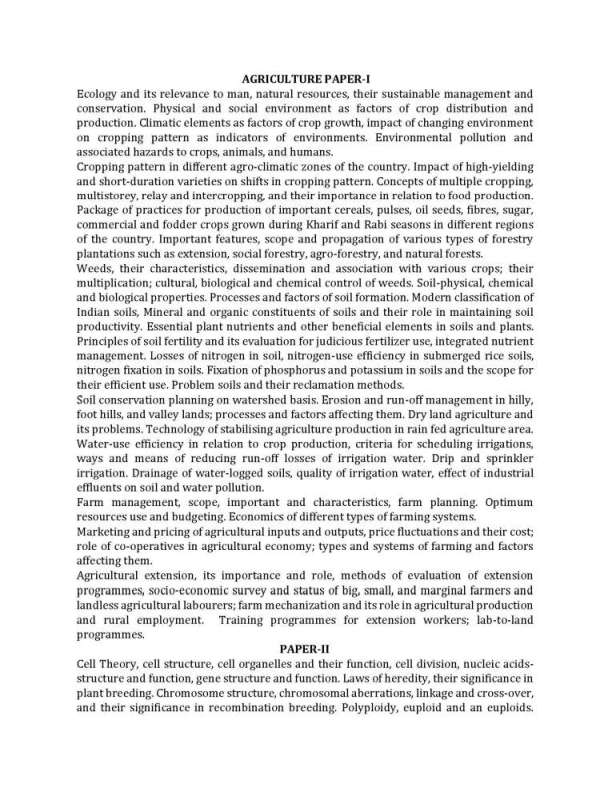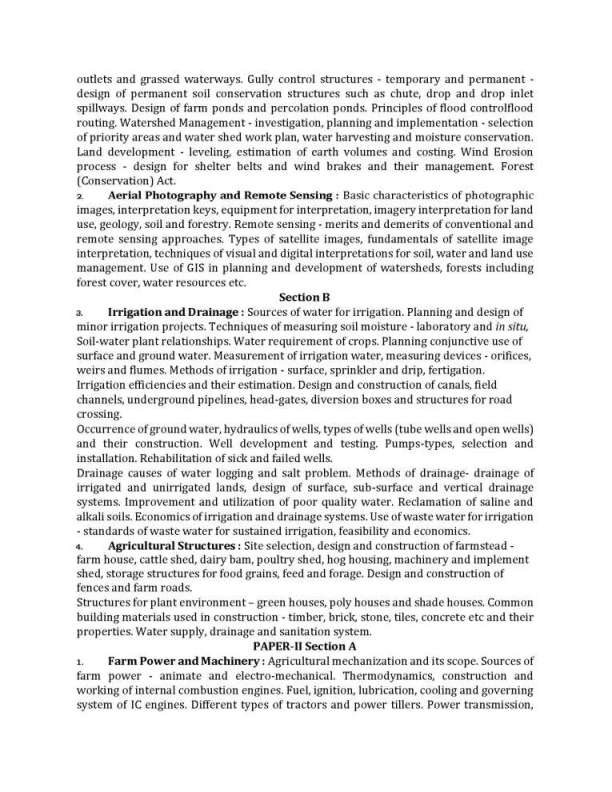|
#2
25th July 2015, 10:00 AM
| |||
| |||
| Re: Indian Forest Service Mains Syllabus
You are looking for the details regarding the Indian Forest Service Civil Engineering Syllabus. So I am providing it to you so that it may be helpful for you: Paper Pattern: The competitive examination comprises two successive stages : Civil Services (Preliminary) Examination (Objective Type) for the screening & selection of candidates for Indian Forest Service (Main) Examination; and Indian Forest Service (Main) Examination (Written and Interview) for the selection of candidates against the vacancies identified and reported for the Indian Forest Service Examination. PRELIMINARY EXAMINATION The Examination shall comprise of two compulsory Papers of 200 marks each Both the question papers will be of the objective type (multiple choice questions). The question papers will be set both in Hindi and English. However, questions relating to English Language Comprehension skills of Class X level will be tested through passages from English language only without providing Hindi translation thereof in the question paper. Each paper will be of two hours duration. Blind candidates will; however, be allowed an extra time of twenty minutes for each paper MAIN EXAMINATION:- The written examination consisting of the following papers:- Paper I General English 300 Marks Paper II General Knowledge 300 Marks Paper III Any two subjects 200 marks to be selected for Paper IV from the list of each the optional paper Paper V subjects set out Paper VI Each subject will have two papers. (C) Interview for Personality Test (such candidates as may be called by the Commission) Maximum Marks: 300 Marks The list of Optional Subjects: (i) Agriculture (ii.) Agricultural Engineering (iii) Animal Husbandry & Veterinary Science (iv) Botany (v) Chemistry (vi) Chemical Engineering (vii) Civil Engineering (viii) Forestry (ix) Geology (x) Mathematics (xi) Mechanical Engineering (xii) Physics (xiii) Statistics (xiv) Zoology Syllabus: Civil Engineering: Paper-I Part-A: Engineering Mechanics, Strength of Materials and Structural Analysis Engineering Mechanics: Units and Dimensions, SI Units, Vectors, Concept of Force, Concept of particle and rigid body. Concurrent, Non Concurrent and parallel forces in a plane, moment of force and Varignon's theorem, free body diagram, conditions of equilibrium, Principle of virtual work, equivalent force system. First and Second Moment of area, Mass moment of Inertia. Static Friction, Inclined Plane and bearings. Kinematics and Kinetics: Kinematics in Cartesian and Polar Co-ordinates, motion under uniform and nonuniform acceleration, motion under gravity. Kinetics of particle: Momentum and Energy principles, D Alembert's Principle, Collision of elastic bodies, rotation of rigid bodies, simple harmonic motion, Flywheel. Strength of Materials: Simple Stress and Strain, Elastic constants, axially loaded compression members, Shear force and bending moment, theory of simple bending, Shear Stress distribution across cross sections, Beams of uniform strength, Leaf spring. Strain Energy in direct stress, bending & shear. Deflection of beams: Mecaulay's method, Mohr's Moment area method, Conjugate beam method, unit load method. Torsion of Shafts, Transmission of power, close coiled helical springs, Elastic stability of columns, Euler's Rankine's and Secant formulae. Principal Stresses and Strains in two dimensions, Mohr's Circle, Theories of Elastic Failure, Thin and Thick cylinder: Stresses due to internal and external pressure Lame's equations. Structural Analysis: Castiglianio's theorems I and II, unit load method, method of consistent deformation applied to beams and pin jointed trusses. Slope-deflection, moment distribution, Kani's method of analysis and column Analogy method applied to indeterminate beams and rigid frames. Rolling loads and Influences lines: Influences lines for Shear Force and Bending moment at a section of a beam. Criteria for maximum shear force and bending Moment in beams traversed by a system of moving loads. Influences lines for simply supported plane pin jointed trusses. Arches: Three hinged, two hinged and fixed arches, rib shortening and temperature effects, influence lines in arches. Matrix methods of analysis: Force method and displacement method of analysis of indeterminate beams and rigid frames. Plastic Analysis of beams and frames: Theory of plastic bending, plastic analysis, statical method, Mechanism method. Unsymmetrical bending: Moment of inertia, product of inertia, position of Neutral Axis and Principle axes, calculation of bending stresses. Part B: Design of Structures: Steel, Concrete and Masonry Structures Structural Steel Design Structural Steel: Factors of safety and load factors. Rivetted, bolted and welded joints and connections. Design of tension and compression members, beams of built up section, rivetted and welded plate girders, gantry girders, stancheons with battens and lacings, slab and gussetted column bases. Design of highway and railway bridges: Through and deck type plate girder, Warren girder, Pratt truss. Design of Concrete and Masonry Structures: Concept of mix design. Reinforced Concrete: Working Stress and Limit State method of design Recommendations of I. S. Codes design of one way and two way slabs, stair-case slabs, simple and continuous beams of rectangular, T and L sections. Compression members under direct load with or without eccentricity, Isolated and combined footings. Cantilever and Counterfort type retaining walls. Water tanks: Design requirements for Rectangular and circular tanks resting on ground. Prestressed concrete: Methods and systems of prestressing, anchorages, Analysis and design of sections for flexure based on working stress, loss of prestress. Design of brick masonry as per I. S. Codes Design of masonry retaining walls. Part-C: Fluid Mechanics, Open Channel Flow and Hydraulic Machines Fluid Mechanics: Fluid properties and their role in fluid motion, fluid statics including forces acting on plane and curve surfaces. Kinematics and Dynamics of Fluid flow: Velocity and accelerations, stream lines, equation of continuity, irrotational and rotational flow, velocity potential and stream functions, flownet, methods of drawing flownet, sources and sinks, flow separation, free and forced vortices. Control volume equation, continuity, momentum, energy and moment of momentum equations from control volume equation, Navier-Stokes equation, Euler's equation of motion, application to fluid flow problems, pipe flow, plane, curved, stationary and moving vanes, sluice gates, weirs, orifice meters and Venturi meters. Dimensional Analysis and Similitude: Buckingham's Pi-theorem, dimensionless parameters, similitude theory, model laws, undistorted and distorted models. Laminar Flow: Laminar flow between parallel, stationary and moving plates, flow through tube. Boundary layer: Laminar and turbulent boundary layer on a flat plate, laminar sublayer, smooth and rough boundaries, drag and lift. Turbulent flow through pipes: Characteristics of turbulent flow, velocity distribution and variation of pipe friction factor, hydraulic grade line and total energy line, siphons, expansion and contractions in pipes, pipe networks, water hammer in pipes and surge tanks. Open channel flow: Uniform and non-uniform flows, momentum and energy correction factors, specific energy and specific force, critical depth, resistance equations and variation of roughness coefficient, rapidly varied flow, flow in contractions, flow at sudden drop, hydraulic jump and its applications surges and waves, gradually varied flow, classification of surface profiles, control section, step method of integration of varied flow equation, moving surges and hydraulic bore. Hydraulic Machines and Hydropower: Centrifugal pumps Types, characteristics, Net Positive Suction Height (NPSH), specific speed. Pumps in parallel. Reciprocating pumps, Airvessels, Hydraulic ram, efficiency parameters, Rotary and positive displacement pumps, diaphragm and jet pumps. Hydraulic turbines, types classification, Choice of turbines, performance parameters, controls, characteristics, specific speed. Principles of hydropower development. Type, layouts and Component works. Surge tanks, types and choice. Flow duration curves and dependable flow. Storage an pondage. Pumped storage plants. Special features of mini, micro-hydel plants. Part-D: Geo Technical Engineering Types of soil, phase relationships, consistency limits particles size distribution, classifications of soil, structure and clay mineralogy. Capillary water and structural water, effective stress and pore water pressure, Darcy's Law, factors affecting permeability, determination of permeability, permeability of stratified soil deposits. Seepage pressure, quick sand condition, compressibility and consolidation, Terzaghi's theory of one dimensional consolidation, consolidation test. Compaction of soil, field control of compaction. Total stress and effective stress parameters, pore pressure coefficients. Shear strength of soils, Mohr Coulomb failure theory, Shear tests. Earth pressure at rest, acive and passive pressures, Rankine's theory, Coulomb's wedge theory, earth pressure on retaining wall, sheetpile walls, Braced excavation. Bearing capacity, Terzaghi and other important theories, net and gross bearing pressure. Immediate and consolidation settlement. Stability of slope, Total Stress and Effective Stress methods, Conventional methods of slices, stability number. Subsurface exploration, methods of boring, sampling, penetration tests, pressure meter tests. Essential features of foundation, types of foundation, design criteria, choice of type of foundation, stress distribution in soils, Boussinessq's theory, Newmarks's chart, pressure bulb, contact pressure, applicability of different bearing capacity theories, evaluation of bearing capacity from field tests, allowable bearing capacity, Settlement analysis, allowable settlement. Proportioning of footing, isolated and combined footings, rafts, buoyancy rafts, Pile foundation, types of piles, pile capacity, static and dynamic analysis, design of pile groups, pile load test, settlement of piles, lateral capacity. Foundation for Bridges. Ground improvement techniques preloading, sand drains, stone column, grouting, soil stabilisation. IFS Civil Engineering Part 1 Sample Paper       So best of Luck Buddy..!! |



